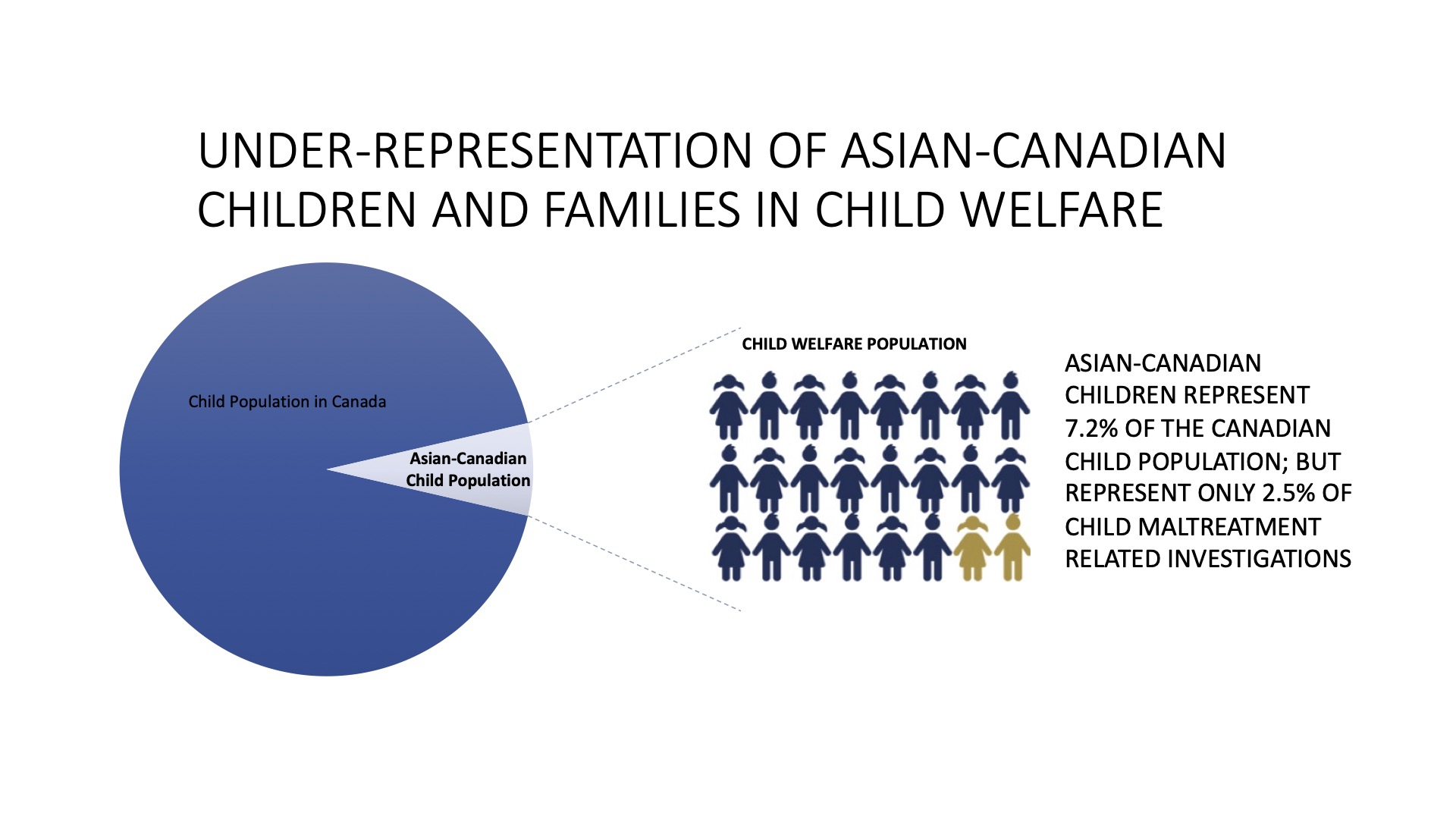The provinces and territories in Canada are each mandated to serve and protect children who have experienced or are at risk of maltreatment. While the child welfare system is a universal service for all children, however, there are differences in child welfare involvement among ethno-racial groups. Asian populations have been found to be under-represented in the child welfare system in Canada, compared to White-Canadian and other ethno-racial populations (Lee, et al., 2016; Lee et al., 2017a; Lee et al., 2017b). Asian-Canadian children represent 7.2% of the Canadian child population; however, they represent only 2.5% of child maltreatment–related investigations (Lee et al., 2016). When involved in the child welfare system, Asian-Canadian populations have dramatically different service usage patterns such as type of maltreatment investigated, fewer referrals to community social services, and longer duration of child welfare intervention, compared to their White or non-Asian counterparts (Lee et al., 2016; Lee et al., 2017a; Lee et al., 2017b). These findings suggest there may be systematic biases in the child welfare system that warrants further examination to ensure equitable access of services for all children.

Research Objective
East and Southeast Asian communities in Canada comprise a large, diverse, and rapidly growing visible minority population (Statistics Canada, 2010). However, there is a dearth of research on Asian-Canadian communities involved or at risk of involvement in the child welfare system (except Lee et al., 2014; Lee, et al., 2016; Lee et al., 2017a; Lee et al., 2017b). This research will be the first qualitative study to examine Asian-Canadian children and families involved or at risk of involvement in the child welfare system. Specifically, it explores factors contributing to the under-representation of Asian-Canadian children involved the child welfare system by examining barriers to equitable access of this universal Canadian service. Another goal is to demystify the “model minority” and cultural stereotypes that assume Asian populations are not in need of community social services. Improved understanding of facilitators (such a cultural brokers), as well as barriers (such as lack of translation services) for Asian-Canadian children and families involved or at risk of involvement in the child welfare system will help inform policy and practice changes to better serve and support diverse populations within mainstream universal systems of care.
Research Questions
The two-year project is designed to address three research questions.
- What are barriers for Asian-Canadian children and families involved or at risk of involvement in the child welfare system?
- What are facilitators for Asian-Canadian children and families involved or at risk of involvement in the child welfare system?
- What are best practices to guide prevention and interventions for Asian-Canadian children and families involved or at risk of involvement in the child welfare system?



